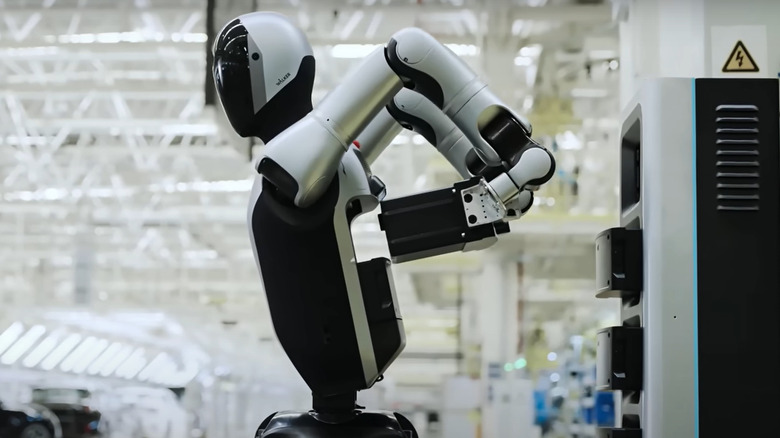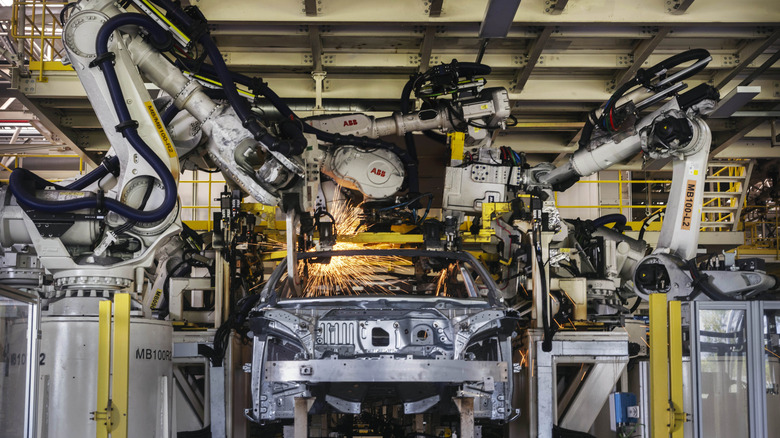
No matter how you feel about humanoid robots, they currently all have a technical limitation due to their form factor. Unless the robot is tethered to a power supply, it needs a battery, and unless you want your robot to be very large, very heavy, and too threateningly enormous to be useful, that battery has to be compact. Practically speaking, this means that the current generation of humanoid robots can't run for long without recharging or swapping a spent battery for a fresh one.
UBTECH, a Chinese
company, has developed a way for its humanoid Walker S2 robot to change its own battery. Futurism.com speculates that with this capability, the Walker S2 could operate around-the-clock and staff "dark" factories in China — fully automated facilities where stuff gets made without humans of any sort, eliminating the need for lights and the related energy costs. Frankly, I think that's getting ahead of the innovation curve. But there's no question that a robot changing its own battery resolves the down-time issues that will arise as android workers become more prevalent.
Read more: These Should Be The Next Mail Trucks When The Post Office Gets Privatized
Trigger Warnings
No lie, the robot changing its own battery also has the potential to creep you out. The Walker S2 appears to have a pair of dorsal packs, each about the size of a lunchbox. When it starts to run low on power, the robot marches over to a rack that has numerous spare batteries. Then the Walker S2 removes its hands, extracts its own dead battery, and replaces it with a new one. It does this with some arm articulations that would be painful or impossible for an non-contortionist human. Then back to work for another two-to-four hours, depending on how much walking the robot does.
After covering battery swapping in the auto industry for almost two decades now, and seeing it pretty much never come to fruition, I was thrilled to see an application for humanoid robots that makes sense. Imagine that you're running a factory or a warehouse and you want to utilize a few humanoid robots. A first consideration is going to be how often and how long they might need to recharge themselves. If they have to plug in for an hour or more, that means managing downtown and potentially buying more robots to cover for the ones that aren't available.
Swapping batteries means effectively no downtime and fewer robots. I'll assume that it also means less complicated robots because the battery packs are separate and can be quickly swapped if they fail.
Cautiously Optimistic About The Robot Age

These robots won't immediately have universal capabilities, so humans can quit worrying about robots taking all their jobs. But within a decade or so, I expect every large factory and warehouse to have at least a few humanoid robots in operation. Not armies of robots, mind you! Just small platoons, doing very dangerous and repetitive things. And frequently breaking down, as we figure out how best to employ them and repair them.
What about robots mowing the lawn or vacuuming the house? Complete overkill, as we already have cheap little bots that can perform those tasks. It's more likely that Tesla's Optimus robots will be building stuff on Mars than they'll be mixing cocktails for your dinner guests. The irony, for those of us raised on C-3PO and "The Terminator," is that we might never see a humanoid robot, unless we're working at a car factory or traveling in space.
A precursor to the Cylons? Again, no. Replacing human labor is actually quite difficult because the human machine is so versatile. No less a robotics booster than Elon Musk discovered this when he tried to automate Model 3 production and learned that robots were bad at intricate assignments requiring agility and dexterity. That said, we are now seeing humanoid robots adapted to meaningful industrial applications, a natural extension of more purpose-engineered robots that have been in use for years. With battery swapping, it's encouraging to see them learning to take care of themselves.
Want more like this? Join the Jalopnik newsletter to get the latest auto news sent straight to your inbox...
Read the original article on Jalopnik.












